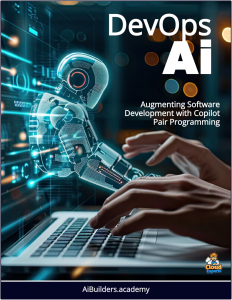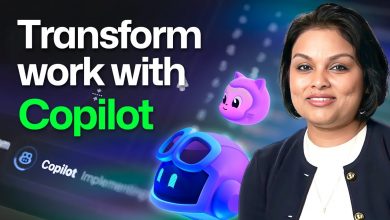Postman AI Agents – Evolution for the Agentic Ai Software Testing Era
Postman CEO envisions Agentic AI agents will leverage APIs to access real-time data, interact with applications, and perform actions in the real world.
 Abhinav Asthana, the co-founder and CEO of Postman, envisions Agentic AI as a transformative force in software development, where intelligent AI agents—powered by large language models (LLMs) and integrated with APIs—will redefine how complex workflows are executed and automated.
Abhinav Asthana, the co-founder and CEO of Postman, envisions Agentic AI as a transformative force in software development, where intelligent AI agents—powered by large language models (LLMs) and integrated with APIs—will redefine how complex workflows are executed and automated.
His vision centers on the idea that Agentic AI will shift software systems from static, human-dependent processes to dynamic, autonomous ones capable of reasoning, decision-making, and task execution with minimal supervision.
He predicts a “10–100X increase in API utility,” enabling software to handle increasingly sophisticated workflows, potentially allowing humans to delegate entire processes to AI agents—provided proper guardrails are in place to ensure reliability and safety.
Asthana sees APIs as the foundational building blocks for this new era of generative software applications. In his view, Agentic AI agents will leverage APIs to access real-time data, interact with applications, and perform actions in the real world, thus amplifying their utility and impact across industries. He emphasizes the need for robust API ecosystems and tools to support this shift, positioning Postman as a critical enabler in this evolution.
To realize this vision, Asthana is evolving Postman from its origins as an API development and testing platform into a comprehensive environment for building, testing, and deploying Agentic AI systems. A key milestone in this evolution is the launch of the Postman AI Agent Builder, introduced in January 2025.
AI Agent Builder
Postman’s AI Agent Builder, launched in January 2025, positions Postman as a leader in this AI-native shift by enabling developers to design, test, and deploy intelligent AI agents that integrate large language models (LLMs) and APIs within a unified platform.
As described in the Postman blog, the rise of agentic AI marks a pivotal shift where agents—sophisticated systems combining LLMs with APIs—execute complex, multi-step workflows autonomously, moving beyond single-shot text responses to dynamic, action-oriented systems.
Postman’s platform leverages its extensive API Network (over 100,000 APIs from 18,000+ companies) and tools like Postman Flows and the Model Context Protocol (MCP) to simplify agent development, making it a cornerstone of AI-native API-driven systems.
Postman AI Agent Builder: Key Features
Postman’s AI Agent Builder integrates AI-native principles into API development, offering features that enhance DevOps Flow and address SDLC challenges:
- Centralized LLM and API Discovery: The platform provides access to LLMs (e.g., OpenAI’s GPT, Anthropic’s Claude, Google’s Gemini) and APIs from verified publishers like Salesforce and PayPal, enabling developers to select and integrate components without complex configurations.
- No-Code Visual Workflow Builder (Postman Flows): A drag-and-drop interface allows developers, including non-coders, to create multi-step agent workflows, integrating AI requests and APIs seamlessly. This reduces development overhead and supports rapid iteration.
- Model Context Protocol (MCP) Integration: Postman supports MCP, a standardized protocol for structuring AI agent interactions with APIs, enabling developers to create and test MCP servers directly from API collections, enhancing interoperability.
- Real-Time Testing and Debugging: Developers can test LLM prompts, responses, and agent performance within Postman, ensuring reliability before deployment. Features like Repro Mode in Postman Insights allow debugging of API failures using real-world data.
- Postman Insights for Observability: Real-time monitoring tracks API and agent performance, detecting failure patterns and enabling proactive issue resolution, reducing mean time to recovery (MTTR).
- Tool Generation API: This feature transforms any API into an agent-ready tool in minutes, eliminating manual coding and enabling seamless integration with LLMs.
- Enterprise-Ready Integrations: Integrations with GitHub, Jira, Slack, and Microsoft Teams ensure alignment with enterprise workflows, supporting collaboration and governance.
These features position Postman as an AI-native platform that simplifies the creation of intelligent, API-driven systems. The no-code visual builder and centralized API/LLM discovery enable developers, testers, and non-technical users to collaborate on agent development, breaking down silos like those in standalone testing departments. For example, testers can use Postman Flows to define agent workflows, reducing communication gaps.
Accelerating DevOps Flow
Tools like Agent Mode, an AI-native assistant, automate tasks such as creating API collections, generating tests, and producing documentation, freeing teams to focus on strategic work. Postman’s AI Agent Builder integrates automated testing into CI/CD pipelines, using AI to generate and prioritize tests (e.g., via Testim-like ML models), reducing flow time and addressing manual testing bottlenecks.
- Predictive Optimization: AI analyzes Flow Metrics (e.g., flow velocity, flow time) to predict bottlenecks, such as testing delays, and suggest optimizations, aligning with the Theory of Constraints and VSM.
- Continuous Improvement: Agent Mode’s ability to update documentation and monitor APIs in real time supports Lean’s pursuit of perfection, ensuring iterative process enhancements.
- AIOps and Observability: Postman Insights uses AI to monitor API and agent performance, predicting failures and reducing MTTR, a key Flow Metric for throughput.
- Scalable Agent Development: The Tool Generation API and MCP integration enable rapid creation of agent-ready tools, scaling development to match demand, unlike the limited capacity of standalone testing teams.
- Enterprise Integration: Seamless connections with GitHub and Jira ensure agents align with existing workflows, supporting DevOps Flow’s technology integration.
Standalone testing departments create SDLC bottlenecks through siloed workflows, manual processes, communication gaps, limited scalability, and late defect detection. Postman’s AI Agent Builder, within an AI-native and DevOps Flow context, addresses these. The collaborative workspace and no-code builder enable testers and developers to work together, using AI to automate test creation and reduce handoff delays.



